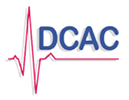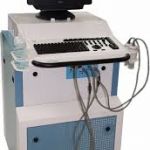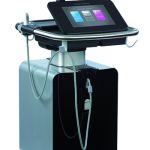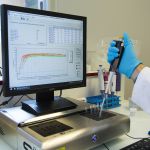Research Unit U1116 DCAC
Défaillance Cardiovasculaire Aiguë et Chronique
Bâtiment D, Campus Brabois-Santé
9 Avenue de la Forêt de Haye, BP 20199
54505 VANDOEUVRE-LES-NANCY
FRANCE
Magnus BÄCK
magnus.back [at] univ-lorraine.fr
Karine BELIN
karine.belin [at] univ-lorraine.fr
Acute and chronic cardiovascular deficiency research unit has a leading position in clinical (aging, telomeres, heart failure, acquired chronic inflammatory vascular diseases and sepsis) and experimental research in mechanotransduction (arterial stiffness), thrombophilias and immunoinflammation (TREM-1 and resolvins). It is structured into two teams: ʺVascular stiffness - Inflammation - Thrombosisʺ and ʺPersonalized Medicine of Heart Failure and Cardiovascular Agingʺ.
Team ʺVascular stiffness - Inflammation - Thrombosisʺ develops 3 axes to identify key molecular and cellular mechanisms drivers of accelerated vascular ageing and atherothrombosis.
- 1. To delineate how intramural cells sense and regulate their interaction with the extracellular matrix that endows arteries with their mechanical function; and to refine the role of vascular calcification which accelerates age-induced arterial stiffening.
- 2. To understand the molecular interplay between arterial stiffness and hypercoagulability, in particular the role of vascular smooth muscle cells and their integrin receptors in thrombin generation.
- 3. To unravel factors favoring the transition of acute to chronic inflammation and how to promote the healing of nonresolving inflammation as a novel cardiovascular therapeutic strategy.
The main specific projects of team ʺPersonalized Medicine of Heart Failure and Cardiovascular Agingʺ are as follows:
- 1. Identifying personalized bioprofiles of heart failure and cardiovascular aging, with a special focus on:
- Systemic biomarkers of fibrosis and inflammation (cardiotrophin, galectin, NGAL, miRNA, TREM-1 ...).
- Telomeres considered as a major determinant of age-related cardiovascular diseases.
- Cross phenotyping with functional and molecular biomarkers from cardiovascular imaging (PET, MRI and echography).
- 2. Developing and testing bioprofile-guided therapies of heart failure, cardiovascular aging and frailty, on a multi-organ scale and including bridge-to-recovery strategies for acute heart failure.
Supervising body(ies)
Key numbers of the unit
- 29 Lecturers and professor
- 5 Staff scientists
- 32 Qualified research supervisors (HDR)
- 8 Technical and administrative staff
- 13 / 3 phD students /
Postdoc student - 664 Publications ACL
2017-2022
Research topics / Know-how

Vascular stiffness
The paradigm of arterial stiffness has recently shifted (1) from elastin/collagen content to vascular smooth muscle cell (VSMCs) tone as key molecular/cellular determinants of arterial wall stiffness; (2) from shear stress to tensile pulsatile circumferential stress, as key mechanical determinants of arterial wall remodeling; (3) and from abnormal microcirculation to large/small arteries cross-talk, as key determinants of target organ (brain, heart and kidney) damage in disease. Our previous findings highlighted the major role of VSMC plasticity in arterial stiffening and processes of early vascular ageing (EVA).
This research axis aims to delineate the mechanisms by which intramural cells sense and regulate the interaction of the cell with the extracellular matrix that endows arteries with much of their mechanical functionality and structural integrity, and the complex interactions amongst differently sized vessels.
Contact(s) :
Patrick LACOLLEYpatrick.lacolley [at] inserm.fr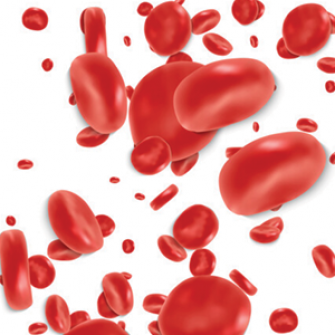
Coagulation – Vasculature coupling
Akin to arterial stiffness and pulse pressure, a prothrombotic state also increases consistently with age. Our previous results provided a first demonstration of a link between arterial stiffness and coagulation in aged patients. Although the mechanisms involved are still largely unclear, our data indicate a likely involvement of integrins. Since anti-platelet drugs and anticoagulants are in clinical use for atherothrombosis prevention, a better molecular understanding of the interplay between arterial stiffness and hypercoagulability has the potential to identify new pathophysiological mechanisms than can be targeted to inhibit early vascular aging.
Contact(s) :
Véronique REGNAULTveronique.regnault [at] inserm.fr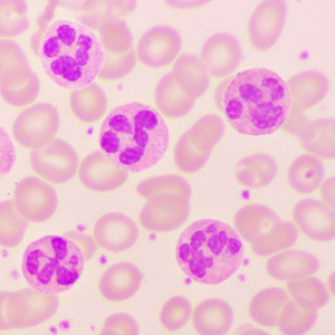
Specialized pro-resolving lipid mediators and calcifications
Lipid mediators are key orchestrators of cardiovascular inflammation during ageing. Pro-inflammatory leukotrienes contribute to atherosclerosis and cardiovascular calcification. In contrast, other lipid mediators oppose the actions of leukotrienes and act as the stop-signals needed for the resolution of inflammation. Such signaling molecules are termed specialized proresolving mediators (SPMs) and stimulate for example leukocyte egress from sites of inflammation and the uptake of apoptotic cells (efferocytosis). In contrast to acute inflammation, the chronic inflammation associated with ageing may result from a failure in the resolution of inflammation.
Our research projects address several different aspects of lipid mediators of inflammation and resolution in cardiovascular ageing, with focus on vascular stiffness, vascular calcification, atherosclerosis and valvular heart disease.
Contact(s) :
Magnus BÄCKmagnus.back [at] univ-lorraine.fr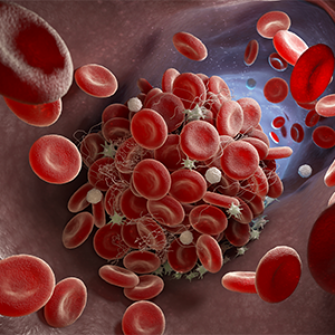
TREM-1 – platelets – endothelium – cardio-metabolic syndrome
TREM-1 stimulates the production of cytokines and pro-inflammatory chemokines by neutrophils and monocytes/macrophages. Over the past decade, we have discovered the key role of TREM-1 activation in sepsis and myocardial infarction and demonstrated the therapeutic potential of TREM-1 blockade to decrease inflammation and improve survival. We are continuing this successful line of research to elucidate the role of TREM-1 in thrombosis and endothelial dysfunction. We are also studying the involvement of TREM-1 in chronic heart failure.
Contact(s) :
Sébastien GIBOTs.gibot [at] chru-nancy.fr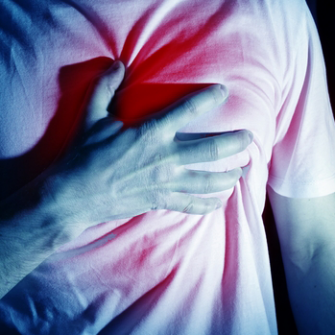
Acute heart failure and cardiovascular shock
The project is centered on bridge-to-recovery strategies leading to protect the integrity of heart and vessels, with a special emphasize on the adrenergic system, considered alone or in association with assistance techniques. Cardiovascular protection may be partly achieved through adrenergic inhibition and we demonstrated that β1 adrenergic inhibition with esmolol may be beneficial in septic shock. This leads to immune-modulatory effects presumably because β1-blockade also acts on immune cells. In experimental septic choc, we expect to determine whether the depletion in β1-adrenoceptors or their inhibition (non-chronotropic doses of esmolol) influence the infiltration of monocyte/macrophages into heart and vessels and also, enhance the differentiation from Th0 into the Th2 non-inflammatory cells. Additionally, by using the β1/β2-adrenoceptor double knock out, we expect to better understand the synergic effect of β1 and β2-adrenoceptors.
Contact(s) :
Bruno LEVYb.bevy [at] chru-nancy.fr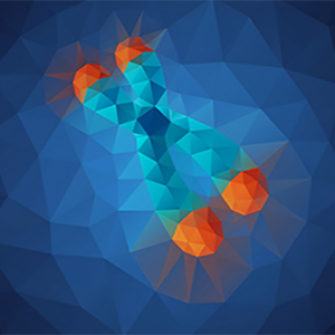
Telomere dynamics and vascular aging
The progressive life-long aging of the cardiovascular system is markedly involved in the high rates of diseases. Our studies have contributed to establish: (i) the association between short leucocyte telomere length (TL) and several age-related arterial diseases and (ii) that TL is mainly determined before adulthood. Telomeres ranking (having short or long TL) is stable during adult life and is thus likely to be established before the first clinical manifestations of atherosclerosis, leading to wonder whether short TL is mechanistically related to the subsequent development of aging-related diseases.
Our project involves both cross-sectional and longitudinal studies, in order to provide information from different elements of TL dynamics (TL at birth, early and late life attrition) and significant knowledge about the relationship between cardiovascular aging and TL.
Contact(s) :
Athanase BENETOSa.benetos [at] chru-nancy.fr
Personalized strategies to prevent, monitor and treat chronic HF
The project is focused on selected mechanisms relevant to the development of chronic heart failure, with an emphasis of the role of kidney dysfunction, mineralocorticoid receptors (MR), inflammation and hemodynamic factors. The aim is to identify and validate blood-systemic and imaging-focal new biomarkers to develop a new classification of chronic heart failure. This will open up new strategies of disease management taking into account relevant co-morbidities (especially chronic kidney disease, hypertension and obesity) and biomarkers in a “multidimensional” approach mixing omics research and imaging technologies.
Contact(s) :
Pierre-Yves MARIEpy.marie [at] chru-nancy.frPatrick ROSSIGNOLp.rossignol [at] chru-nancy.fr
Staff

Magnus BÄCK Director UL
Karine BELIN Administrative Manager UL
phD students
- 5A these 2025JULIEN AZZICaractérisation métrologique et clinique d'un dispositif innovant de mesure de la saturation cutanée en oxygène par méthode optique utilisé dans le cadre de la prise en charge des troubles de la vascularisation cutanéeMetrological and clinical characterization of an innovative device for measuring skin oxygen saturation by optical method used in the management of skin vascularization disordersDirecteur de thèse :Athanase BENETOSCo-directeur de thèse :Marine AMOUROUX
- 3A these 2025Gabrielle VAN DE VELDEClairance des plaquettes par les cellules musculaires lisses vasculaires humainesPlatelets CLEARance by human vascular smooth muscle cellsDirecteur de thèse :Véronique REGNAULTCo-directeur de thèse :Rumeyza BASCETIN
- 3A these 2025Gaëtan VANOTTIÉtude du rôle du LSR, récepteur des lipoprotéines sur l'homéostasie lipidique et le processus inflammatoire de l'athérosclérose (LSR-RESOLVE)Investigation of the role of the lipoprotein receptor, LSR, in lipid homeostasis and inflammation in atherosclerosis (LSR-RESOLVE)Directeur de thèse :Frances YEN POTINCo-directeur de thèse :Magnus BACK
- 3A these 2025MATHIEU ECHIVARDFréquence, facteurs déterminants et impact pronostique de l'insuffisance cardiaque chez les patients avec dysfonction ventriculaire gauche persistante post-infarctus du myocardeFrequency, determining factors, and prognostic impact of heart failure in patients with persistent left ventricular dysfunction post-myocardial infarctionDirecteur de thèse :Nicolas GIRERDCo-directeur de thèse :Guillaume BAUDRY
- 3A these 2024TRIPTI RASTOGIProfils congestifs et fibrose en IC – Impact des interactions cardio-rénalesCongestion profiles and fibrosis in heart failure– Impact of cardiorenal interactionsDirecteur de thèse :Nicolas GIRERD
- 3A these 2024Sara ABD AL RAHIMRôle de l'intégrine AlphavBêta3 dans l'hypercoagulabilité de l'hypertension pulmonaireRole of AlphavBêta3 integrin in the hypercoagulability of pulmonary hypertensionDirecteur de thèse :Ari CHAOUATCo-directeur de thèse :Julien PERRIN
- 2A these 2025LUCILE ADMANTTRAjectoires de VIeillissement et hypertension ARTErielle : Aspects épidémiologiques, physiopathologiques et thérapeutiquesAging trajectories and arterial hypertension : Epidemiological, physiopathological and therapeutics aspectsDirecteur de thèse :Athanase BENETOSCo-directeur de thèse :Simon TOUPANCE
- 2A these 2025BENJAMIN PEQUIGNOTImagerie pulmonaire de la ventilation en méthode TCAV dans le SDRALITIA : Lung Imaging for Tcav (time controlled adaptive Ventilation) In Ards (acute respiratory distress syndrome)Directeur de thèse :Bruno LEVYCo-directeur de thèse :Laurent BITKER
- 2A these 2025TRISTAN EHRLICHAnalyse des patchs péricardiques traités au glutaraldéhydeAnalysis of glutaraldehyde-treated pericardial patchesDirecteur de thèse :Pablo MAUREIRACo-directeur de thèse :Nguyen TRAN
- 2A these 2025SILAN ALGULREG GE La résolvine D2 et son REcepteur GPR18 limitent l'Athérosclérose via la résolution de l'inflaMmationREG GE The role of Resolvin D2 / GPR18 axis in the resolution of inflammation associated with atherosclerosisDirecteur de thèse :Nathalie MERCIERCo-directeur de thèse :Magnus BACK
- 1A these 2025OCEANE VILLAUMECD Macrophages cérébraux, lipides et inflammationCD Brain Macrophages, lipids and InflammationDirecteur de thèse :Guy MALKINSONCo-directeur de thèse :Frances YEN POTIN
- 1A these 2024MICKAEL LESCROARTOptimisation de la prise en charge post choc cardiogénique / arrêt cardiaque des patients admis en réanimation.Optimizing current managements of cardiogenic shock / Cardiac arrest of Intensive care unit populationDirecteur de thèse :Bruno LEVYCo-directeur de thèse :Antoine KIMMOUN
- 1A these 2024CHRISTINA CIOCHINASIMPA Ped Formation initiale et maintien des compétences en anesthésie pédiatrique : Intérêt des pédagogies innovantes pour sécuriser et standardiser les pratiques incluant la simulation, le mentorat, l'évaluation standardisé, et autres techniques pédagogiques - Simulation, Innovation, Mentorat et Pédagogies pour l'Anesthésie pédiatrique.Directeur de thèse :Marie-Reine LOSSERCo-directeur de thèse :Emmanuel NOVY
Pas de soutenance pour le moment
- EMILIEN SCHALLDéveloppement d'un appareil pour évaluer la profondeur des brûlures en utilisant les propriétés électromécaniques de la peau humaineDevelopment of a device to assess the burn depth using electromechanical properties of human skinDirecteur de thèse :Marie-Reine LOSSERCo-directeur de thèse :Adrien BALDIT
- SARA ABD AL RAHIMRôle de l'intégrine αvβ3 dans le remodelage vasculaire pulmonaire de l'hypertension pulmonaireRole of integrin αvβ3 in pulmonary vascular remodeling of pulmonary hypertensionDirecteur de thèse :Ari CHAOUATCo-directeur de thèse :Julien PERRIN
- TRIPTI RASTOGIProfils congestifs en insuffisance cardiaqueCongestion profiles in heart failureDirecteur de thèse :Nicolas GIRERD
- JULIEN RAFTEtude des effets de l'anesthésie locorégionale dans le traitement de la douleur opératoireImpact of regional anesthesia on operative painDirecteur de thèse :Marie-Reine LOSSERCo-directeur de thèse :Claude MEISTELMAN
- MADONNA ATEF BOULOS SALIBBiomarqueurs de la fibrose myocardique et de la rigidité artérielle chez les patients en insuffisance rénale terminaleBiomarkers of myocardial fibrosis and arterial stiffness in patients with end-stage renal diseaseDirecteur de thèse :Patrick ROSSIGNOLCo-directeur de thèse :Sophie GIRERD
- CELIA SCHELLENBERGMécanismes vasculaires et thrombotiques dans les maladies inflammatoires chroniques de l’intestinVascular and thrombotic mechanisms in chronic inflammatory bowel diseaseDirecteur de thèse :Patrick LACOLLEYCo-directeur de thèse :Laurent PEYRIN-BIROULET
- BENJAMIN BRUSTOLINRôle de TREM-1 au cours de l’obésité et de ses complicationsRole of TREM-1 during obesity and related complicationsDirecteur de thèse :Sébastien GIBOT
- MATTHIEU BARDINRésolution de l’inflammation par les médiateurs lipidiques dans le vieillissement vasculaireLipid mediators of the resolution of inflammation in vascular ageingDirecteur de thèse :Jérémy LAGRANGECo-directeur de thèse :Magnus BACK
- DEBORAH JAEGERAnalyse mécanistique des effets hémodynamiques de la réanimation d’un arrêt cardiaque et implications thérapeutiquesAnalysis of hemodynamic effects of cardiac arrest resuscitation and therapeutic implicationsDirecteur de thèse :Tahar CHOUIHEDCo-directeur de thèse :Guillaume DEBATY
- ALEXANDRE RAOULLe rôle des adhésions focales des cellules musculaires lisses vasculaires dans la rigidité artérielle et ses liens avec la coagulation.The role of focal adhesions of vascular smooth muscle cells in arterial stiffness and its interaction with coagulation.Directeur de thèse :Patrick LACOLLEYCo-directeur de thèse :Véronique REGNAULT
- CAROLINE FRITZOptimisation des techniques assistance circulatoire et ventilatoire dans l'arrêt cardiaque. Apport d'un modèle expérimental porcin.Optimization of circulatory and ventilatory assistance techniques in cardiac arrest. Contribution of an experimental model.Directeur de thèse :Bruno LEVYCo-directeur de thèse :Antoine KIMMOUN
- MANON DURANDImpact de la modulation β1-adrénergique sur la balance lymphocytaire dans le choc septique expérimentalImpact of β1-adrenergic blockade on T lymphocytes balance during septic shockDirecteur de thèse :Bruno LEVYCo-directeur de thèse :Antoine KIMMOUN
- Laure ABENSURDyskaliémie : fréquence, pronostic, prise en charge et iatrogénèse.Dyskalaemia : frequency, prognosis, suport and iatrogenesis.Directeur de thèse :Patrick ROSSIGNOL
- Ilona SARAIEVAImplication de la dynamique de la longueur des télomères dans la sténose aortique calcifiéeRelations between aortic valve calcification and telomere length dynamicsDirecteur de thèse :Athanase BENETOSCo-directeur de thèse :Simon TOUPANCE
- Masatake KOBAYASHIOUTILS D'EVALUATION DE LA CONGESTION ET IMPLICATIONS PRONOSTIQUES EN INSUFFISANCE CARDIAQUEEvaluation Tools to Quantify Congestion and Prognostic Implication in Patients with Heart FailureDirecteur de thèse :Nicolas GIRERDCo-directeur de thèse :Olivier HUTTIN
- Philippe GUERCIEffets de thérapies actuelles et nouvelles sur la microcirculation sévèrement endommagéeCurrent and new therapies for the critically injured microcirculationDirecteur de thèse :Bruno LEVYCo-tutelle :Department of Translational Physiology, Academic Medical Center, Amsterdam, the Netherlands
PAYS-BAS
Equipment
The unit has mainly three technical platforms:
- Cardiovascular exploration platform dedicated to the functional and anatomical analysis of the cardiovascular system of small animals. It is equipped with 2 high resolution ultrasound echographs: "Vevo 770" and "Vevo 3100" (FUJIFILM VisualSonics ®).
- Vascular exploration technical platform dedicated to the in vitro study of vascular reactivity on arterial rings or segments. It is equipped with 2 myography systems for arteries of different sizes: "pressurized myograph" (Living System Instrumentation) and "multi-wire myograph-620M" (DMT, Danish Myo Technology).
- Hemostasis technical platform dedicated to the analysis of platelet aggregation and thrombin generation in whole blood, platelet rich and platelet poor plasma. It is equipped with a thrombo-aggregator (SD Innovation) and 2 fluorimeters with dedicated software (Calibrated automated Thombograph, Diagnostica Stago).

